
All categories
Featured selections
Trade Assurance
Buyer Central
Help Center
Get the app
Become a supplier

(1101 products available)




















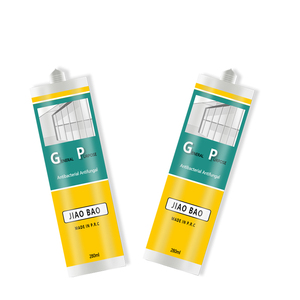






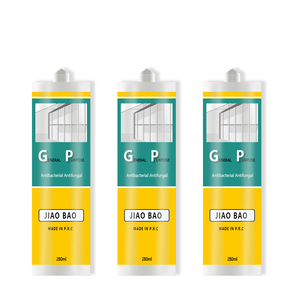
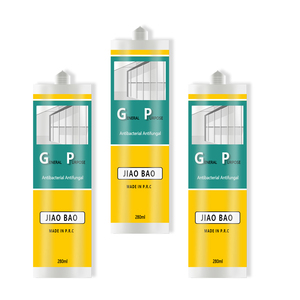
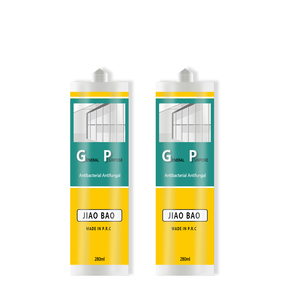
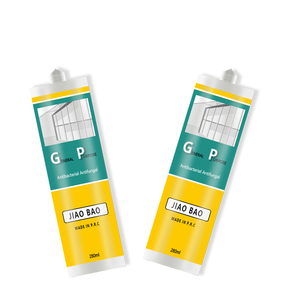



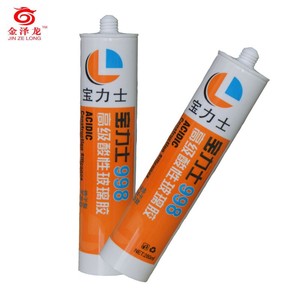

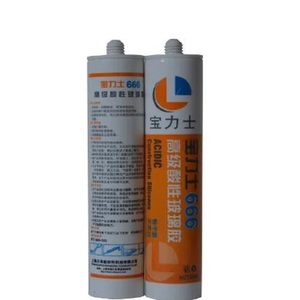


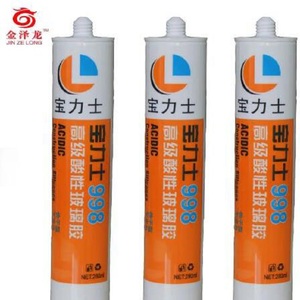

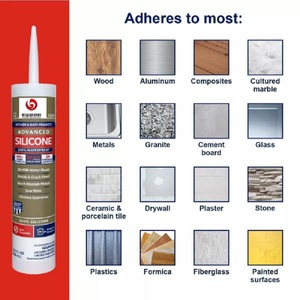



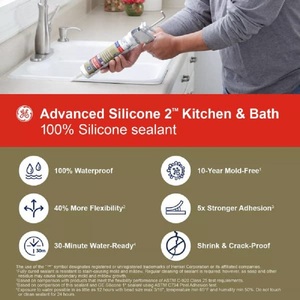

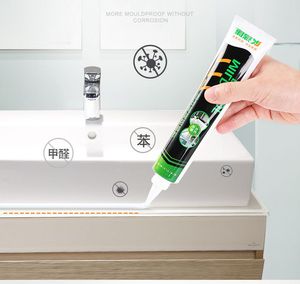
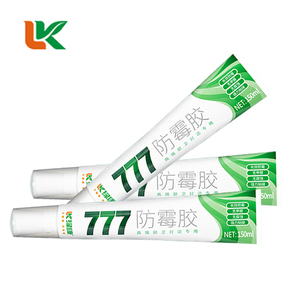



Silicone sealants are vital in the expanding construction industry in the UAE. These sealants are used for bonding and sealing in construction and other industrial applications due to their exceptional adhesion. UAE silicone sealant is resistant to water, extreme temperature, and outdoor UV.
The following are common sealants found in the UAE:
Acetic silicone sealants
Acetic silicone sealants are flexible and tough. They are resistant to mold and mildew and can be used in wet and humid environments. The sealants release acetic acid during curing, which gives them a strong odor. These are not ideal for places with metal components since the acid can corrode metal surfaces. Mostly used in kitchens and bathrooms where humidity is common.
Oxime silicone sealants
Oxime silicone sealants are less pungent. They do not release acetic acid like acetyl silane; thus, they are safe to use on metal surfaces. They provide excellent adhesion to glass, ceramics, and some plastics. Their resistance to UV light makes them suitable for outdoor applications.
Treath silicone sealants
The low modulus and high movement capability of the triath silicone sealant give it elasticity, allowing it to endure substrate shifts and thermal expansion. It adheres well to construction materials like concrete, stone, aluminum, etc. It is also resistant to water and weather and is suitable for outdoor applications. Ideal for joints in facades, curtain walls, and other structural glazing projects.
Neutral cure silicone sealants
Neutral cure silicone sealants do not release corrosive by-products during curing. This makes them suitable for sensitive substrates like metals, mirrors, and certain plastics. They bond well to glass, masonry, and metal. They are commonly used in glazing applications and other construction projects requiring long-term durability and weather resistance.
The expanding construction and automotive industries of the UAE create a demand for its silicone sealant. These sealants are used in various industries due to their durability and flexibility.
Construction industry
The construction industry uses UAE silicone sealants to fill joints and cracks in buildings, windows, and facades. They protect against weather elements like rain, UV light, and temperature changes. Silicone sealants are also used to install glass, insulating the glass and providing a seal that minimizes energy loss. Silicone sealants are also used in roofing applications as a waterproof membrane that protects against leaks.
Automobiles
Silicone sealants help assemble automobiles by sealing windshield and window installations. They provide a buffer between glass and metal, absorbing shock and reducing the risk of cracking. Silicone sealants protect vital electrical and mechanical components from water and dust accumulation, which may damage them.
Aerospace
Silicone sealants are used in aerospace because they can survive high altitudes and temperature variations. They are used to seal fuel systems, preventing leaks that are dangerous in the aerospace industry. In wiring and component assembly, silicone sealants insulate and protect electronic systems from environmental factors, ensuring durability and reliability.
Marine
In the marine sector, silicone sealants ensure the safety and durability of boats and ships regularly exposed to water. They seal the hulls of ships and boats to ensure waterproofing, protecting the vessel's interior. Silicone's resistance to saltwater and UV radiation makes it ideal for sealing portholes, hatches, and other openings.
Heating, ventilation, and air conditioning (HVAC)
The silicone sealants used in the HVAC industry insulate and protect key components from moisture and dust accumulation. This helps seal ductwork to prevent air leaks, making HVAC systems more energy efficient. In addition, silicone sealants are applied to key parts to insulate them from extreme temperature variations, which may affect their performance and durability.
Flexibility and elasticity
Silicone sealants can stretch and compress without losing adhesion. This flexibility allows them to accommodate the expansion and contraction caused by extreme temperatures. This makes them suitable for outdoor and industrial applications.
Durability and weather resistance
Silicone sealants are durable. They withstand harsh weather conditions, including rain, snow, UV radiation, and extreme temperature fluctuations. They do not degrade or lose effectiveness over time, making them a long-lasting choice for both indoor and outdoor applications.
Moisture and water resistance
Once cured, silicone sealants form a waterproof and airtight seal that prevents moisture and water infiltration. This makes them ideal for use in bathrooms and kitchens and other areas prone to moisture exposure.
Non-toxic and flexible
The silicone sealants in the UAE are non-toxic. They cure into a flexible, rubber-like material that allows them to expand and contract with surfaces. The sealants can be used to seal gaps between surfaces and for insulating purposes.
Joint sealing
Silicone sealant is commonly used to fill gaps and cracks in various surfaces. In construction, it seals joints between dissimilar materials like concrete, glass, metal, and wood. This prevents water infiltration and enhances the appearance by providing a smooth finish.
Weatherproofing
Silicone sealant creates weatherproof barriers in windows, doors, and other exterior applications. It protects against rain, wind, and UV rays, reducing energy costs and increasing the lifespan of treated surfaces.
Automotive applications
In the automotive industry, silicone sealant is used for engine gaskets, windshields, and other joints to provide a tight seal that resists oil and coolant exposure. It helps ensure the vehicle's longevity by preventing corrosion and damage from water or other elements.
Packaging
Silicone sealants create airtight and watertight seals for food containers, medical supplies, and other packaging. This helps prevent contamination and preserves the contents' freshness.
Electronics protection
Silicone sealant protects sensitive electronic components and circuit boards from moisture, dust, and other contaminants. It is commonly used in LED sealing to ensure longevity and reliable performance.
Sealant inspection
Inspect the silicone sealant regularly to ensure it is not cracked, worn, or damaged. If there are multiple cracks or the sealant is peeling, a maintenance check is required.
Cleaning
Once silicone has cured, it is challenging to remove. It is better to clean up any residue before it hardens. Use a cloth to wipe up and tidy it. Other methods are using mineral spirits or adhesive remover.
Maintenance of silicone sealants
Silicone sealants require little to no maintenance. However, prolonged direct sunlight can break down the sealant. If the sealant is used indoors, its lifespan is extended. Sealants can last as long as 20 years with proper care.
Repair
Once silicone sealants show a sign of damage, they need to be repaired. Leaky sealants will allow water to seep into the building and create molds. The first step of repairing silicone sealants is removing the old sealant. This can be done using a utility knife. After removing the old sealant, the area needs to be cleaned. Apply painter's tape along both sides of the sealant. The new sealant will be applied along the joint opened by the previous sealant. Caulk gun the silicone into the joints, filling it. Remove the tape before the silicone hardens.
Silicone sealants are used in the construction, automotive, and aerospace industries for bonding and sealing. They are resistant to water, extreme temperatures, and UV light. However, it is still important to carefully check them for quality and safety.
Adhesion strength
Quality silicone sealants need to have sufficient adhesion strength to bond well with different surfaces like glass, metal, wood, and concrete. Sealants with low adhesion will peel or lift off after a sh while compromising the integrity of the sealed joints.
Low shrinkage
As silicone sealants cure, they tend to shrink. Sealants that shrink excessively will create gaps that can permit water intrusion and weaken structural integrity. Quality sealants are formulated with low shrinkage to minimize risks.
Non-toxic and safe for application
Silicone sealants contain chemicals that are potentially harmful if inhaled or in direct contact with the skin. When selecting sealants for indoor use, only choose those that are low in volatile organic compounds (VOCs) and are labeled 'non-toxic'. Sealants with low VOCs help maintain indoor air quality.
Remove old sealants safely
Old sealants need to be removed before installing new ones. This is because leaving remnants of the old sealant will affect bonding. While removing it requires the use of sharp instruments, it is necessary to take extra precautions not to harm the area around it. Use a utility knife with a steady hand. Other safer options are using a scraper or sealant remover tool.
Fire resistance
Quality silicone sealants have high fire resistance. This is especially important in construction or automotive applications where exposure to high heat is likely. Sealants with poor fire resistance will pose a safety risk and endanger the structure or vehicle they are sealing.
A1.Silicone sealants are used to fill joints and cracks between various materials. This makes them a popular adhesive in construction. Because of their flexibility, they are commonly used in glazing applications.
A2.Silicone sealants are durable and resistant to weather elements like rain, extreme temperatures, and UV rays. They are also non-toxic. This makes them ideal for indoor applications.
A3.Remove the old sealant using a utility knife. Run the knife along the surface to pry it up gently. After loosening the sealant, use a putty knife to scrape the rest off. The area should be cleaned to remove debris and residue before applying a new sealant.
A4.Most silicone sealants cure within 24 hours. However, for the best results, follow the manufacturer's instructions on the data sheet and allow the sealant to cure fully before exposing it to water or stress.
A5.Proper preparation of the surface before applying the sealant helps improve adhesion. Use rubbing alcohol to clean and degloss the area. While the surface needs to be dry, ensure it is slightly damp before applying the sealant. This helps improve its adhesion.